Influence of Interaction between Microcracks and Macrocracks on Crack Propagation of Asphalt Concrete
Abstract
1. Introduction
2. Effective Modulus of Asphalt Concrete
2.1. Influence of Morphological Characteristics of Macrocracks
2.2. Influence of Interaction Effect between Microcracks and the Macrocrack
- Each microcrack is uniformly open, without considering microcrack closure and crack surface friction;
- The microcrack orientation is random and no dominant microcrack orientation exists;
- Only weak interactions exist between neighboring microcracks.
3. Meso-Structural Model of Asphalt Concrete with Different Crack Distribution Characteristics
3.1. Asphalt Concrete Meso-Parameters
3.2. Construction of Microcracks and the Macrocrack
3.3. SCB Virtual Test
4. DEM Results Analysis
4.1. Stress–Strain Curve
4.2. Crack Propagation Process
4.3. Stress Field Analysis for Crack Tip Domain of Main Crack
5. Conclusions
- (1)
- A good correlation exists between the Talyor medium model and the numerical results. The interaction effect persists throughout the entire crack propagation process, and it is weak when the crack density is low, which only reduces the effective modulus of the asphalt concrete; when the crack density is greater than 0.4 (f3 > 0.4), the interaction has crack shielding and acceleration effects, respectively.
- (2)
- Regarding the crack extension process, when the crack density f3 = 0.6 and 0.8, the interaction delays the time elapsed at the crack extension stage and fracture stage, i.e., it has a crack shielding effect; when the crack density f3 = 1.0, the interaction significantly reduces the time elapsed at the crack extension stage and fracture stage, i.e., it has a crack acceleration effect.
- (3)
- According to the results of the stress field, the interaction mainly influences the tensile field, and no obvious changes occur in the shear field. When the crack density f3 = 0.8, the area ratio between the tensile and shear fields is increased, meaning the interaction has a crack shielding effect, causing the asphalt concrete to mainly undergo tensile stress damage; meanwhile, the area ratio between the tensile and shear fields is decreased as the crack density increases, indicating that the interaction has a crack acceleration effect, which transforms the tensile stress damage to shear stress damage.
6. Research Significance and Perspectives
Author Contributions
Funding
Institutional Review Board Statement
Informed Consent Statement
Data Availability Statement
Conflicts of Interest
References
- Daghighi, A.; Nahvi, A. Effect of different additives on fatigue behavior of asphalt mixtures. In Construction Materials and Structures; IOS Press: Amsterdam, The Netherlands, 2014; pp. 601–607. [Google Scholar] [CrossRef]
- Aliha, M.R.M.; Razmi, A.; Mansourian, A. The influence of natural and synthetic fibers on low temperature mixed mode I + II fracture behavior of warm mix asphalt (WMA) materials. Eng. Fract. Mech. 2017, 182, 322–336. [Google Scholar] [CrossRef]
- Moniri, A.; Ziari, H.; Aliha, M.R.M.; Saghafi, Y. Laboratory study of the effect of oil-based recycling agents on high RAP asphalt mixtures. Int. J. Pavement Eng. 2011, 22, 1423–1434. [Google Scholar] [CrossRef]
- Najjar, S.; Moghaddam, A.M.; Sahaf, A.; Aliha, M.R.M. Low temperature fracture resistance of cement emulsified asphalt mortar under mixed mode I/III loading. Theor. Appl. Fract. Mech. 2020, 110, 102800. [Google Scholar] [CrossRef]
- Kassem, H.A.; Chehab, G.R. Characterisation of the mechanical performance of asphalt concrete mixtures with selected WMA additives. Int. J. Pavement Eng. 2021, 22, 625–642. [Google Scholar] [CrossRef]
- Sarsam, S.I. Influence of Additives on the Viscoelastic Behavior of Asphalt Concrete. Br. Int. Exact Sci. (BIoEx) J. 2022, 4, 162–171. [Google Scholar] [CrossRef]
- Li, X.; Li, X.; Jiang, X. Influence of a micro-crack on the finite macro-crack. Eng. Fract. Mech. 2017, 177, 95–103. [Google Scholar] [CrossRef]
- Guo, H. Analysis on the Fracture Mechanism of Cracked Materials Considering the Influence of Micro-cracks in the Vicinity of the Macro-crack Tip. IAENG Int. J. Appl. Math. 2023, 53, 225–230. [Google Scholar]
- Gong, S.X. On the main crack-microcrack interaction under mode III loading. Eng. Fract. Mech. 1995, 51, 753–762. [Google Scholar] [CrossRef]
- Li, X.; Su, R.; Zhang, H.; Weng, Q.; Jiang, X. Influence of Multiple Micro Cracks on the Damag Behavior of a Macro-Crack Tip. Appl. Math. Mech. 2022, 43, 1347–1358. [Google Scholar] [CrossRef]
- Petrova, V. Interaction between a main crack and inclusions of a given orientation. Mech. Compos. Mater. 1988, 24, 288–294. [Google Scholar] [CrossRef]
- Tamuzs, V.; Petrova, V. Modified model of macro–microcrack interaction. Theor. Appl. Fract. Mech. 1999, 32, 111–117. [Google Scholar] [CrossRef]
- Petrova, V.; Tamuzs, V.; Romalis, N. A survey of macro-microcrack interaction problems. Appl. Mech. Rev. 2000, 53, 117–146. [Google Scholar] [CrossRef]
- Li, X.; Li, X.; Yang, H.; Jiang, X. Effect of micro-cracks on plastic zone ahead of the macro-crack tip. J. Mater. Sci. 2017, 52, 13490–13503. [Google Scholar] [CrossRef]
- Xia, X.; Zhang, Q.; Qiao, P.; Li, L. Exploration of the Mechanism of Interaction between Cracks and Study on the Effect of Microcrack Zones on Main Cracks. Appl. Math. Mech. 2010, 31, 61–70. [Google Scholar] [CrossRef]
- Li, Y.; Yi, Z.; Wang, M.; Su, K. The Stress Intensity Factor of a Finite Width Plate With a Mode-I Center Crack Subjected to Uniform Stress on the Crack Surface Near the Crack Tip. Appl. Math. Mech. 2020, 41, 1083–1091. [Google Scholar] [CrossRef]
- Jiang, Z.D.; Petit, J.; Bezine, G. Fatigue propagation of two parallel cracks. Eng. Fract. Mech. 1990, 37, 1139–1144. [Google Scholar] [CrossRef]
- Jiang, Z.D.; Petit, J.; Bezine, G. An investigation of stress intensity factors for two unequal parallel cracks in a finite width plate. Eng. Fract. Mech. 1992, 42, 129–138. [Google Scholar] [CrossRef]
- Renshaw, C.; Schulson, E. Universal behaviour in compressive failure of brittle materials. Nature 2001, 412, 897–900. [Google Scholar] [CrossRef]
- Li, Y.-P.; Yang, C.-H. Approximate analysis of interaction of closely spaced cracks. J. Mech. Mater. Struct. 2006, 1, 147–162. [Google Scholar] [CrossRef][Green Version]
- Zhao, J.; Wang, W. Numerical Simulation and Experiment of Interaction and Influence on Two Colinear and Offset Cracks by FRANC2D Software. In Proceedings of the Pressure Vessels and Piping Conference Volume 1: Codes and Standards, Baltimore, ML, USA, 17–21 July 2011; ASME: New York, NY, USA, 2011; pp. 453–458. [Google Scholar] [CrossRef]
- Wang, H.; Liu, Z.; Xu, D.; Zeng, Q.; Zhuang, Z. Extended finite element method analysis for shielding and amplification effect of a main crack interacted with a group of nearby parallel microcracks. Int. J. Damage Mech. 2016, 25, 4–25. [Google Scholar] [CrossRef]
- Mishra, P.; Das, S. Interaction between interfacial collinear Griffith cracks in composite media under thermal loading. Z. Für Naturforschung A 2016, 71, 465–473. [Google Scholar] [CrossRef]
- Kamaya, M. Evaluation of Coalescence Criteria for Parallel Cracks. In Proceedings of the ASME 2002 Pressure Vessels and Piping Conference. New and Emerging Computational Methods: Applications to Fracture, Damage, and Reliability, Vancouver, BC, Canada, 5–9 August 2002; ASME: New York, NY, USA, 2002; pp. 181–186. [Google Scholar] [CrossRef]
- Moussa, W.A.; Bell, R.; Tan, C. Investigating the effect of crack shape on the interaction behavior of noncoplanar surface cracks using finite element analysis. J. Press. Vessel. Technol. 2002, 124, 234–238. [Google Scholar] [CrossRef]
- Tsang, D.; Oyadiji, S.; Leung, A. Multiple penny-shaped cracks interaction in a finite body and their effect on stress intensity factor. Eng. Fract. Mech. 2003, 70, 2199–2214. [Google Scholar] [CrossRef]
- Zhao, X.; Liu, B. A Numerical Approach for Two Parallel Surface Cracks of infinite plane. In Proceedings of the 2016 International Forum on Energy, Environment and Sustainable Development, Shenzhen, China, 16–17 April 2016; Atlantis Press: Amsterdam, The Netherlands, 2016. [Google Scholar] [CrossRef]
- Awang, M.K.; Ismail, A.E.; Tobi, A.M.; Zainulabidin, M.H. Stress intensity factors and interaction of two parallel surface cracks on cylinder under tension. In Proceedings of the IOP Conference Series: Materials Science and Engineering, Busan, Republic of Korea, 25–27 August 2017; IOP Publishing: Bristol, UK, 2017; Volume 165, p. 012009. [Google Scholar] [CrossRef]
- Daud, R.; Ariffin, A.K.; Abdullah, S.; Ismail, A.E. Computation of Mixed Mode Stress Intensity Factor for Parallel Edge Cracks. Appl. Mech. Mater. 2011, 52–54, 1326–1331. [Google Scholar] [CrossRef]
- Chen, J.; Fan, X.; Huang, Y. Calculation method for stress intensity factor of collinear double cracks. J. Huazhong Univ. Sci. Technol. (Nat. Sci. Ed.) 2017, 45, 61–67. [Google Scholar] [CrossRef]
- Jin, H.J.; Wu, S.J. A new driving force parameter for fatigue growth of multiple cracks. Int. J. Fatigue 2017, 96, 10–16. [Google Scholar] [CrossRef]
- Guo, W.; Zhao, L.; Xu, L.; Han, Y. Surface Multiple Crack Propagation Behavior under High Temperature Creep. Trans. China Weld. Inst. 2019, 40, 44–49. (In Chinese) [Google Scholar]
- Zhu, D.J. Stress intensity factor and interaction analysis of offset parallel cracks in brittle solids. Eur. J. Mech.-A/Solids 2021, 85, 104119. [Google Scholar] [CrossRef]
- Alam, S.Y.; Loukili, A. Effect of micro-macro crack interaction on softening behaviour of concrete fracture. Int. J. Solids Struct. 2020, 182, 34–45. [Google Scholar] [CrossRef]
- Candaş, A.; Oterkus, E.; İmrak, C.E. Dynamic crack propagation and its interaction with micro-cracks in an impact problem. J. Eng. Mater. Technol. 2021, 143, 011003. [Google Scholar] [CrossRef]
- Basoglu, M.F.; Kefal, A.; Zerin, Z.; Oterkus, E. Peridynamic modeling of toughening enhancement in unidirectional fiber-reinforced composites with micro-cracks. Compos. Struct. 2022, 297, 115950. [Google Scholar] [CrossRef]
- Zhang, C. Stress and displacement field at the crack tip of an ideal linear viscoelastic body under biaxial loading. Nat. Sci. J. Xiangtan Univ. 1982, 2, 11. (In Chinese) [Google Scholar]
- Kassem, E.; Grasley, Z.C.; Masad, E. Viscoelastic Poisson’s ratio of asphalt mixtures. Int. J. Geomech. 2013, 13, 162–169. [Google Scholar] [CrossRef]
- Aurangzeb, Q.; Ozer, H.; Al-Qadi, I.L.; Hilton, H.H. Viscoelastic and Poisson’s ratio characterization of asphalt materials: Critical review and numerical simulations. Mater. Struct. 2017, 50, 1–12. [Google Scholar] [CrossRef]
- Yang, W. Macro and Micro Fracture Mechanics; National Defense Industry Press: Arlington, VA, USA, 1995. (In Chinese) [Google Scholar]
- Feng, X.; Yu, S. A simple method for calculating the effective modulus of microcrack damaged materials. ACTA Mech. Sin. 2001, 33, 7. (In Chinese) [Google Scholar]
- Leng, Y. Test Study on Asphalt Concrete Mixture Materia Design and Comprehensive Performance of High-Speed Railway Surface Layer of Foundation Bed Reinforced by Asphalt Concrete at Seasonal Frozen Region. Master’s Thesis, Southwest Jiaotong University, Chengdu, China, 2018. (In Chinese). [Google Scholar]
- Liu, Y.; Dai, Q.; You, Z. Viscoelastic Model for Discrete Element Simulation of Asphalt Mixtures. J. Eng. Mech. 2009, 135, 324–333. [Google Scholar] [CrossRef]
- You, Z.; Adhikari, S.; Dai, Q. Three-Dimensional Discrete Element Models for Asphalt Mixtures. J. Eng. Mech. 2008, 134, 1053–1063. [Google Scholar] [CrossRef]
- Wang, L.-B. Mechanics of Asphalt: Microstructure and Micromechanics; McGraw-Hill Professional: New York, NY, USA, 2012. [Google Scholar]
- Kim, H.; Wagoner, M.P.; Buttlar, W.G. Simulation of fracture behavior in asphalt concrete using a heterogeneous cohesive zone discrete element model. J. Mater. Civ. Eng. 2008, 20, 552–563. [Google Scholar] [CrossRef]
- Du, J.; Ren, D.; Ai, C.; Zhang, J.; Qiu, Y. Effect of aggregate gradation on crack propagation in asphalt mixtures at low temperatures based on the Eshelby equivalent inclusion theory. Constr. Build. Mater. 2021, 290, 123181. [Google Scholar] [CrossRef]
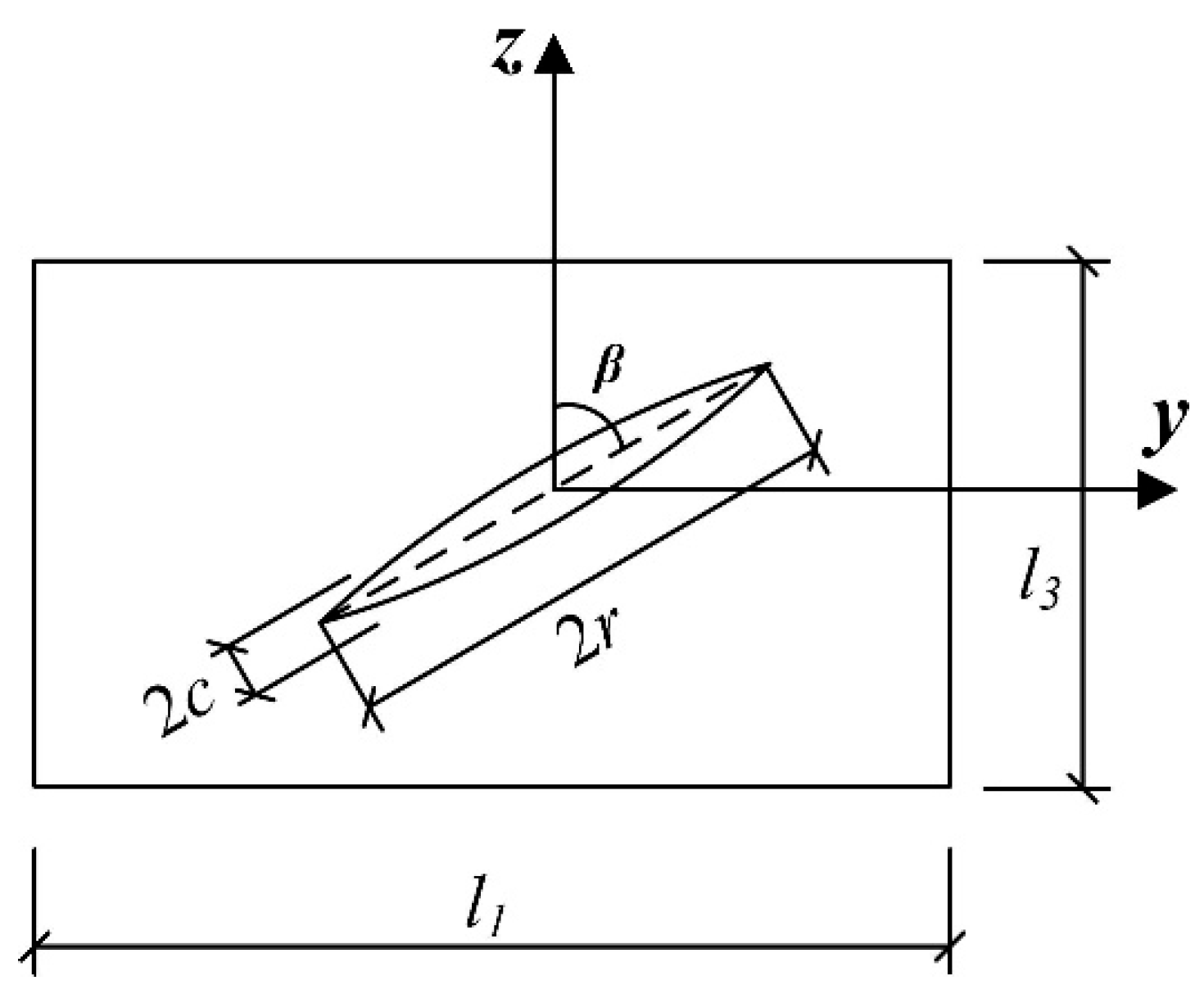
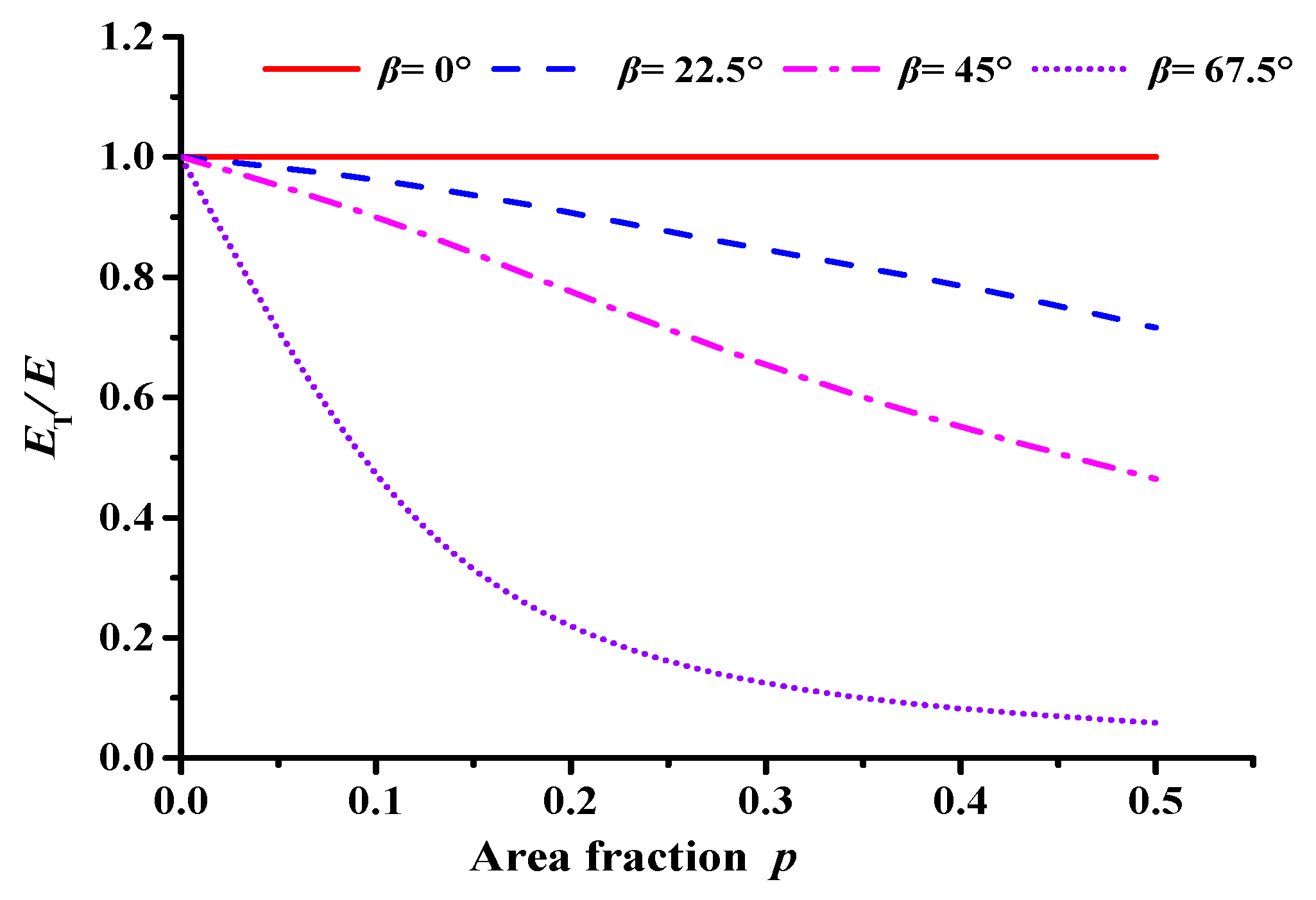
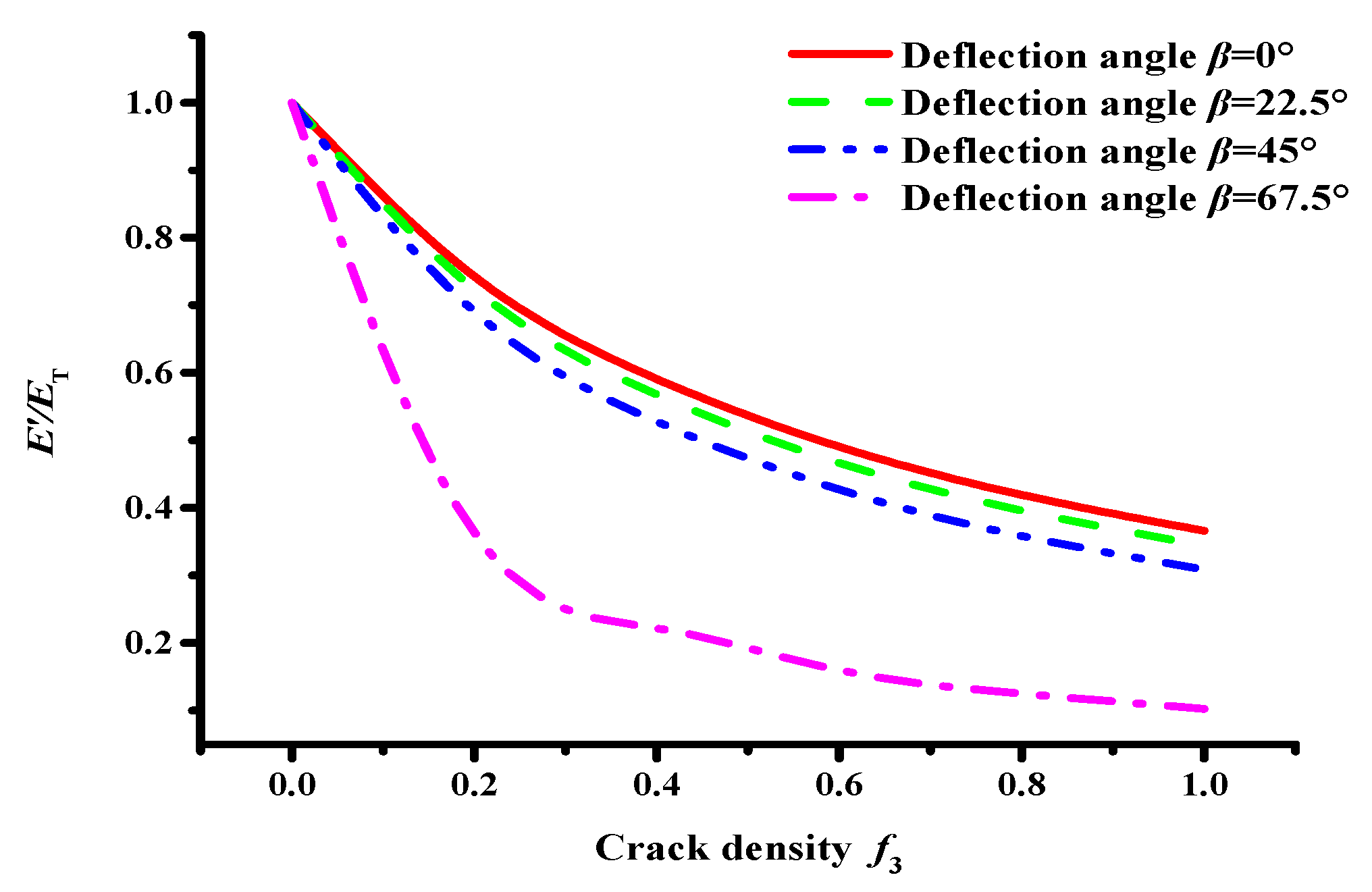
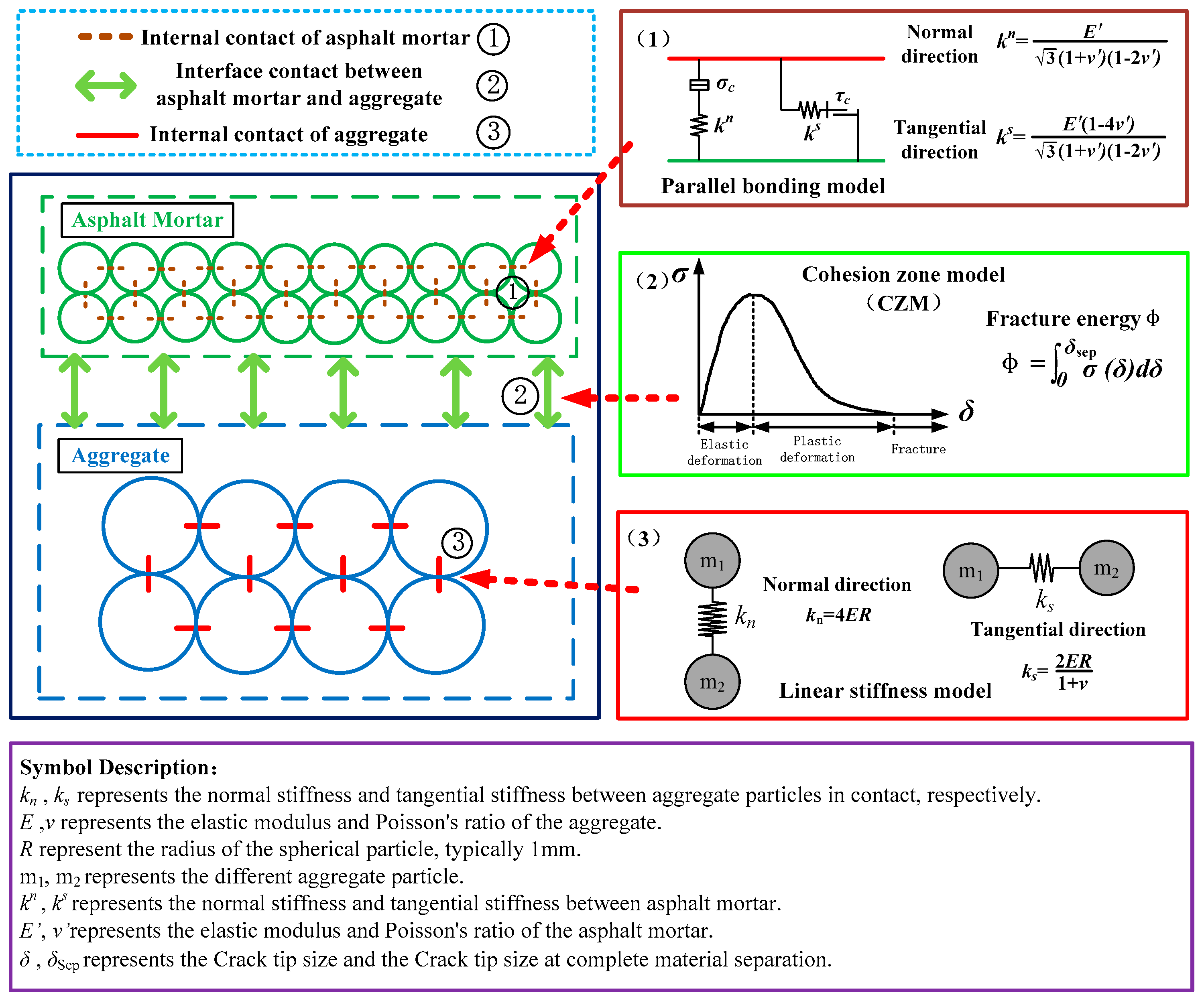

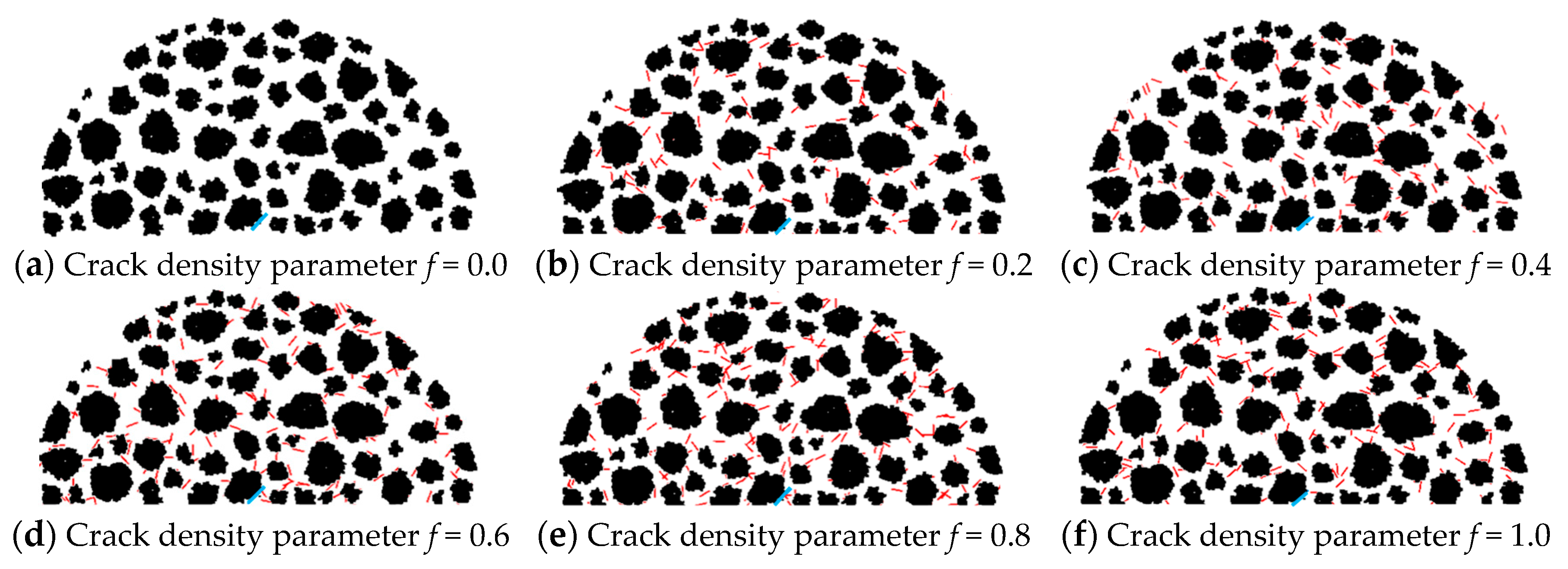
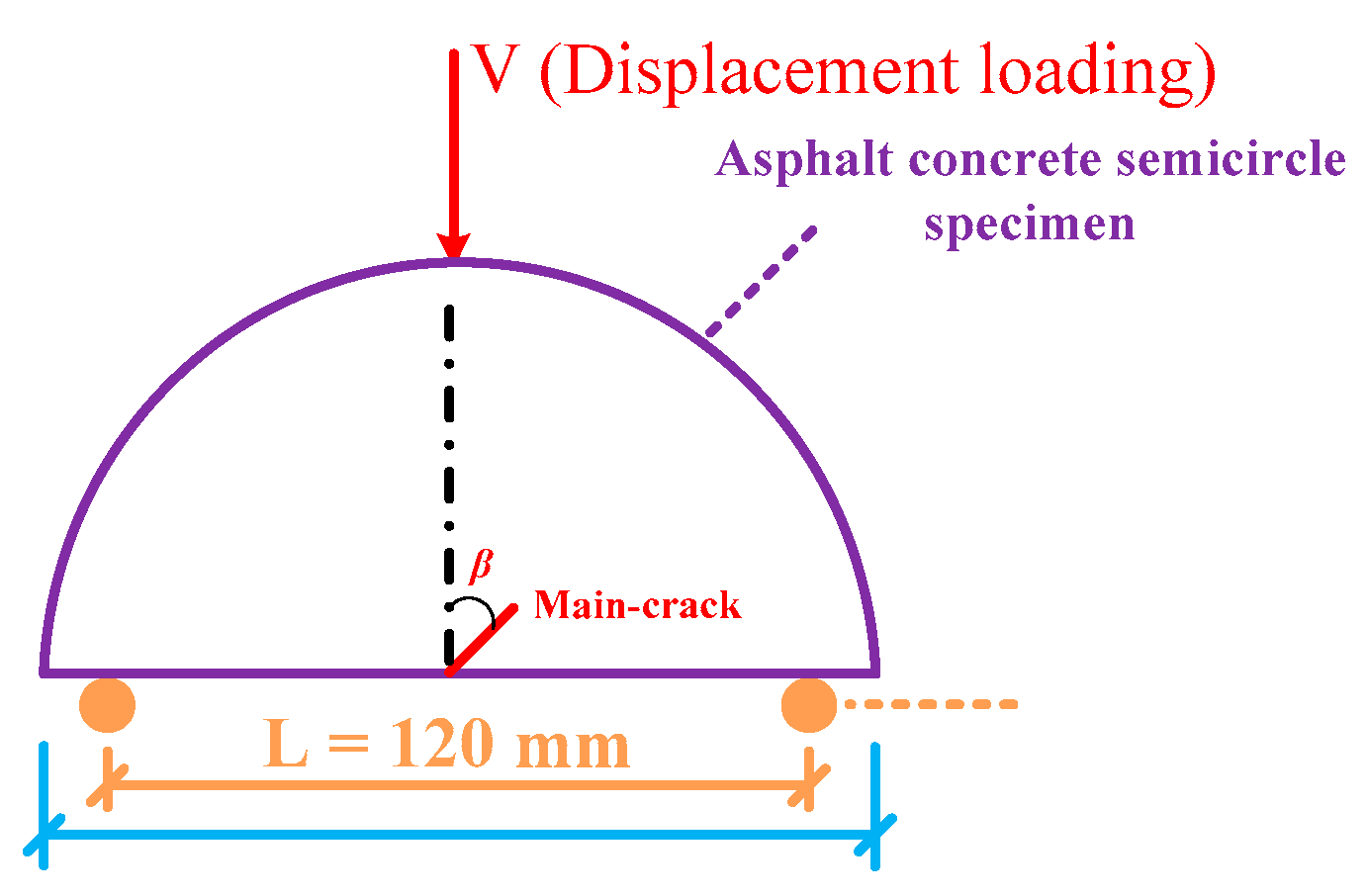
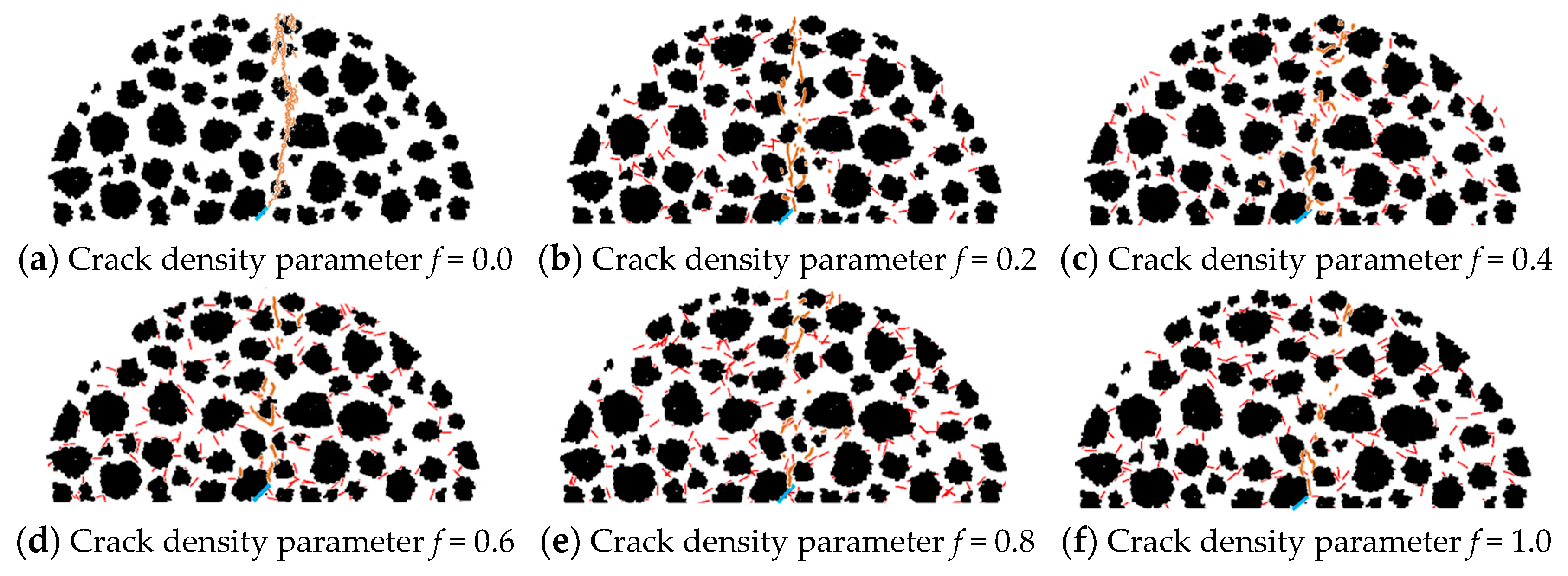
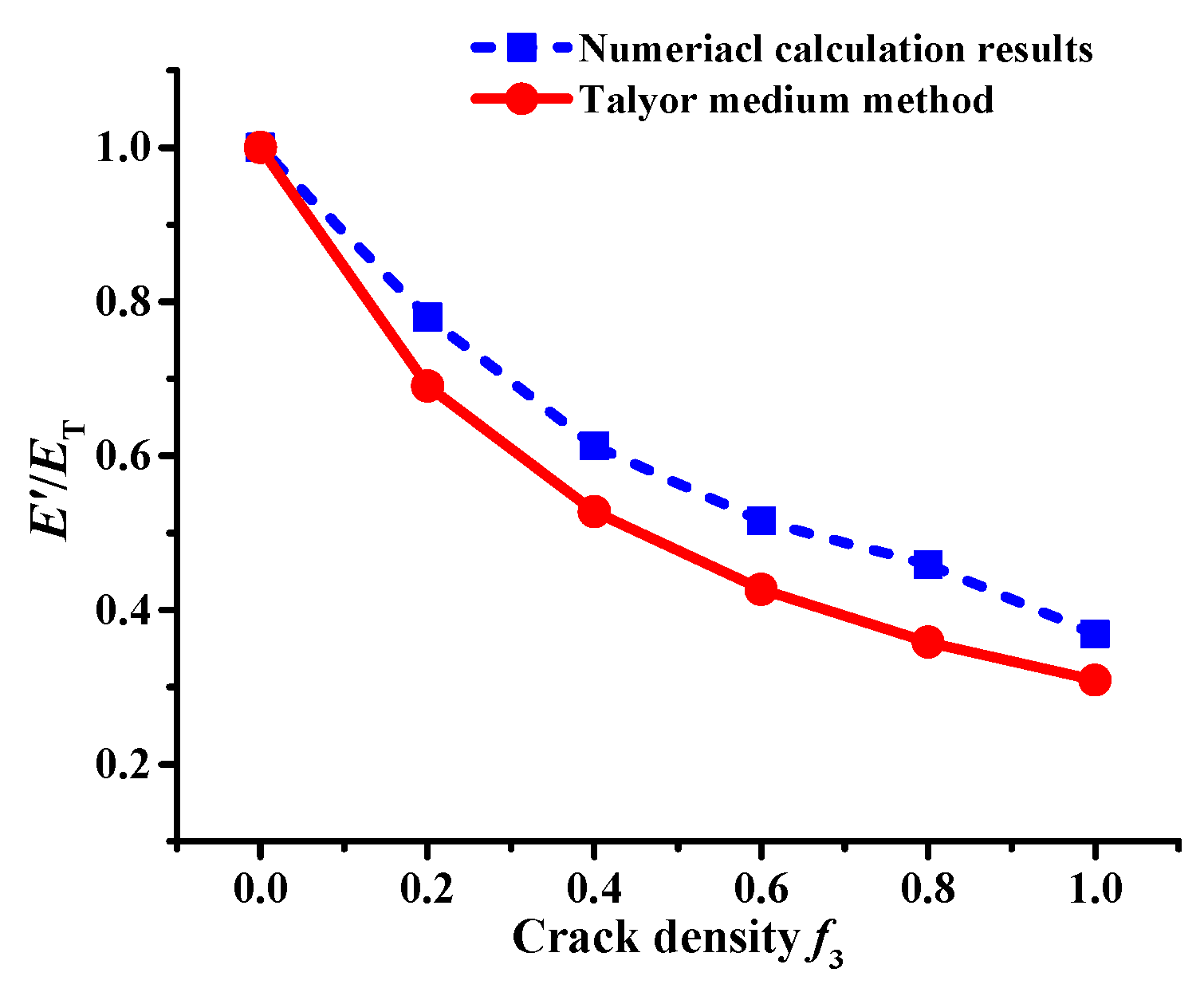
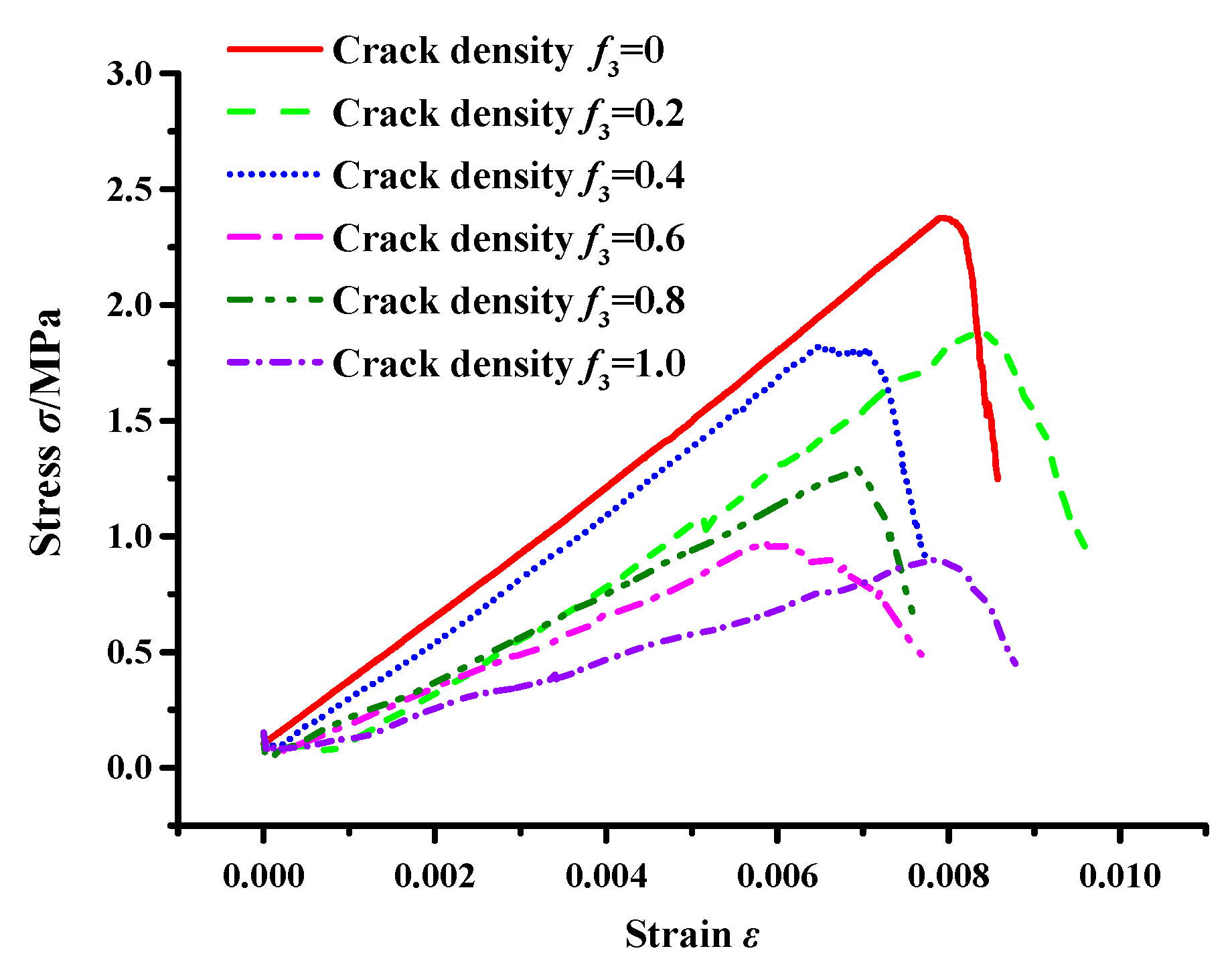


| Mess size (mm) | 16.0 | 13.2 | 9.5 | 4.75 | 2.36 | 1.18 | 0.60 | 0.30 | 0.15 | 0.075 |
| Pass rate (%) | 100.0 | 97.5 | 84.0 | 62.5 | 42.5 | 32.0 | 24.0 | 15.5 | 11.0 | 6.0 |
| Oil–Stone Ratio (%) | Gross Volumetric Density (g/cm3) | Marshall Stability (kN) | Porosity (%) | Flow Value (mm) | Void Filled with Asphalt VFA (%) | Maximum Theoretical Density (g/cm3) |
|---|---|---|---|---|---|---|
| 6.27 | 2.547 | 12.48 | 2.1 | 4.34 | 76.2 | 2.610 |
| Items | Values |
|---|---|
| Failure load (kN) | 35.91 |
| Splitting strength (MPa) | 3.553 |
| Failure tensile strain (με) | 0.0103 |
| Destructive stiffness modules (MPa) | 596.85 |
| Temperature (°C) | Dynamic Modulus (MPa) | |||||
|---|---|---|---|---|---|---|
| 0.1 Hz | 0.5 Hz | 1 Hz | 5 Hz | 10 Hz | 25 Hz | |
| −20 | 20,973 | 23,835 | 24,933 | 26,991 | 27,717 | 28,486 |
| Material Phase Class | Calculated Parameters | |
|---|---|---|
| Coarse aggregate | Dynamic modulus (GPa) | 55.5 |
| Tensile strength σ (MPa) | 27.6 | |
| Poisson’s ratio νs | 0.23 | |
| Normal stiffness kn (MPa) | 222 | |
| Tangential stiffness ks (MPa) | 90.24 | |
| Asphalt concrete | Void ratio (%) | 2 |
| Particle density (kg/m3) | 2582 | |
| Asphalt mortar | Inter-particle contact modulus Ec (GPa) | 0.832 |
| Particle normal to tangential stiffness ratio kn/ks | 1 | |
| Parallel bond modulus Ec′ (GPa) | 0.596 | |
| Parallel bond normal to tangential stiffness ratio knc/ksc | 0.667/0.133 | |
| Inter-particle friction coefficient fs | 0.5 | |
| Average normal strength of parallel bond σc (MPa) | 3.553 | |
| Standard deviation of parallel bond normal strength (MPa) | 1 | |
| Average tangential strength of parallel bond τc (MPa) | 3.553 | |
| Standard deviation of parallel bond tangential strength (MPa) | 55.5 | |
| Crack Density Parameter f3 | Crack Incubation Stage | Crack Extension Stage | Fracture Stage | |||
|---|---|---|---|---|---|---|
| Number of Cracks | Time Step Log lgt | Number of Cracks | ∆1 | Number of Cracks | ∆2 | |
| 0 | 1 | 4.39 | 33 | 0.22 | 446 | 0.02 |
| 0.2 | 1 | 4.20 | 29 | 0.27 | 242 | 0.05 |
| 0.4 | 1 | 4.04 | 28 | 0.24 | 218 | 0.06 |
| 0.6 | 1 | 4.01 | 14 | 0.7 | 144 | 0.04 |
| 0.8 | 1 | 3.81 | 15 | 0.42 | 164 | 0.06 |
| 1 | 1 | 3.65 | 12 | 0.32 | 136 | 0.04 |
Disclaimer/Publisher’s Note: The statements, opinions and data contained in all publications are solely those of the individual author(s) and contributor(s) and not of MDPI and/or the editor(s). MDPI and/or the editor(s) disclaim responsibility for any injury to people or property resulting from any ideas, methods, instructions or products referred to in the content. |
© 2024 by the authors. Licensee MDPI, Basel, Switzerland. This article is an open access article distributed under the terms and conditions of the Creative Commons Attribution (CC BY) license (https://creativecommons.org/licenses/by/4.0/).
Share and Cite
Du, J.; Wang, J.; Fu, Z. Influence of Interaction between Microcracks and Macrocracks on Crack Propagation of Asphalt Concrete. Materials 2024, 17, 2877. https://doi.org/10.3390/ma17122877
Du J, Wang J, Fu Z. Influence of Interaction between Microcracks and Macrocracks on Crack Propagation of Asphalt Concrete. Materials. 2024; 17(12):2877. https://doi.org/10.3390/ma17122877
Chicago/Turabian StyleDu, Jianhuan, Jingang Wang, and Zhu Fu. 2024. "Influence of Interaction between Microcracks and Macrocracks on Crack Propagation of Asphalt Concrete" Materials 17, no. 12: 2877. https://doi.org/10.3390/ma17122877
APA StyleDu, J., Wang, J., & Fu, Z. (2024). Influence of Interaction between Microcracks and Macrocracks on Crack Propagation of Asphalt Concrete. Materials, 17(12), 2877. https://doi.org/10.3390/ma17122877




